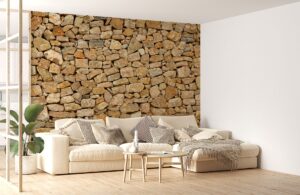Carbon Prepreg vs. Traditional Carbon Fiber: Pros and Cons
Editorial Team December 27, 2023
The global carbon prepreg market size stood at a value of above USD 9.32 billion in 2023. The market is further expected to grow at a CAGR of 9.3% in the forecast period of 2024-2032 to attain a value of more than USD 20.75 billion by 2032. With such remarkable growth, carbon prepregs have cemented their position as a vital material in various industries. As engineers, designers, and manufacturers strive to develop products with superior strength-to-weight ratios, exceptional durability, and precision, they often find themselves faced with the choice between carbon prepreg and traditional carbon fiber.
In this blog post, we will explore the pros and cons of both carbon prepreg and traditional carbon fiber materials. By the end of this article, you’ll have a clearer understanding of when and why to choose one over the other, depending on the specific requirements of your project.
Carbon Prepreg: Pros
1. Improved Consistency and Quality
One of the primary advantages of carbon prepreg over traditional carbon fiber is the superior consistency and quality it offers.
a. Controlled Resin Distribution
Carbon prepregs are manufactured by impregnating carbon fiber fabrics with a precise amount of resin. This controlled resin distribution ensures that every part of the material has the right amount of binding material, resulting in uniform mechanical properties across the entire product.
b. Reduced Risk of Defects
The precise resin impregnation process minimizes the risk of defects like dry spots or voids, which can weaken traditional carbon fiber composites. Carbon prepregs are known for their reliability, making them a preferred choice in critical applications such as aerospace and automotive components.
2. Ease of Handling and Fabrication
Carbon prepregs offer significant advantages in terms of ease of handling and fabrication.
a. Reduced Labor Costs
Compared to traditional carbon fiber, carbon prepregs simplify the manufacturing process. Manufacturers can achieve the desired composite structure with fewer labor hours, reducing production costs in the long run.
b. Complex Shapes and Layups
Carbon prepregs are versatile and allow for the creation of complex shapes and layups. This flexibility is crucial in industries like aerospace, where intricate and aerodynamic designs are common.
3. Enhanced Strength-to-Weight Ratio
Carbon prepregs excel in delivering an exceptional strength-to-weight ratio, a critical factor in various applications.
a. High Tensile Strength
Carbon prepregs typically exhibit high tensile strength, making them suitable for applications where structural integrity is paramount, such as aircraft components and sporting goods.
b. Lower Weight
The lower weight of carbon prepregs compared to traditional carbon fiber composites contributes to improved fuel efficiency in the automotive industry and increased performance in sports equipment.
Carbon Prepreg: Cons
While carbon prepregs offer numerous advantages, it’s essential to be aware of their limitations.
1. Higher Cost
One of the most significant drawbacks of carbon prepregs is their higher cost compared to traditional carbon fiber.
a. Material Costs
The resin impregnation process and the need for precise manufacturing techniques increase the material costs of carbon prepregs. This can be a limiting factor for budget-conscious projects.
b. Processing Costs
The specialized equipment and expertise required for working with carbon prepregs can significantly increase processing costs. Manufacturers need to invest in autoclaves and trained personnel, further raising production expenses.
2. Limited Shelf Life
Carbon prepregs have a limited shelf life, which can pose challenges in storage and usage.
a. Storage Requirements
Carbon prepregs need to be stored in controlled environments with specific temperature and humidity conditions to maintain their integrity. Improper storage can result in degraded material properties.
b. Shelf Life Challenges
Projects with extended timelines may face issues with carbon prepreg materials expiring before they can be fully utilized, potentially leading to waste.
3. Specialized Equipment and Training
Working with carbon prepregs requires specialized equipment and training, which may not be readily available for all manufacturers.
a. Need for Autoclaves
The curing process of carbon prepregs often necessitates the use of autoclaves. These large, high-pressure ovens are costly and require dedicated facilities.
b. Skilled Labor Required
Operators and technicians working with carbon prepregs must undergo specialized training. Finding skilled labor can be challenging and may increase labor costs.
Traditional Carbon Fiber: Pros
Traditional carbon fiber materials have their own set of advantages that make them suitable for specific applications.
1. Lower Material Costs
One of the most significant advantages of traditional carbon fiber is its lower material cost.
a. Raw Carbon Fiber Costs
Traditional carbon fiber is less expensive in terms of raw material costs. This affordability can be a decisive factor for projects with budget constraints.
b. Simpler Processing
Manufacturing with traditional carbon fiber involves fewer steps and less complexity, which can result in lower processing costs.
2. Suitable for Certain Applications
While carbon prepregs excel in various applications, traditional carbon fiber can still find its place in specific projects.
a. Cost-Effective Projects
For projects where high precision and uniformity are not critical, traditional carbon fiber may provide a cost-effective solution.
b. DIY and Small-Scale Production
Traditional carbon fiber is more accessible for DIY enthusiasts and small-scale production because it requires fewer specialized tools and skills.
3. Longer Shelf Life
Traditional carbon fiber materials generally have a longer shelf life compared to carbon prepregs.
a. Easier Storage
Traditional carbon fiber can be stored under less stringent conditions, reducing storage-related challenges.
b. Extended Usability
This longer shelf life allows for more flexibility in project planning, reducing the risk of material wastage due to expiration.
Traditional Carbon Fiber: Cons
However, traditional carbon fiber materials come with their own set of drawbacks.
1. Quality Control Challenges
Maintaining consistent quality with traditional carbon fiber composites can be challenging.
a. Variability in Material Properties
Traditional carbon fiber materials can exhibit variability in material properties, which can lead to inconsistencies in the final product.
b. Risk of Defects
Issues like dry spots and voids are more common in traditional carbon fiber composites, requiring careful quality control measures.
2. Limited Design Flexibility
Traditional carbon fiber may not be the best choice for projects with complex design requirements.
a. Complex Shapes Require Extra Effort
Creating complex shapes or intricate layups with traditional carbon fiber may require additional effort and, in some cases, compromise structural integrity.
b. Restricted Layup Options
Designers may find their options limited when it comes to achieving specific composite structures with traditional carbon fiber.
3. Reduced Strength-to-Weight Ratio
Compared to carbon prepregs, traditional carbon fiber composites may offer a lower strength-to-weight ratio.
a. Comparatively Lower Tensile Strength
While traditional carbon fiber is strong, it may not match the exceptionally high tensile strength of carbon prepregs.
b. Weight Disadvantage
Traditional carbon fiber composites can be heavier than their carbon prepreg counterparts, affecting overall performance in weight-sensitive applications.
Conclusion
In conclusion, the choice between carbon prepreg and traditional carbon fiber ultimately depends on the specific requirements of your project. Both materials have their own set of pros and cons, and understanding these factors is crucial for making an informed decision.
The global carbon prepreg market’s rapid growth, projected to reach over USD 20.75 billion by 2032, underscores the significance of these materials in various industries. When selecting between carbon prepreg and traditional carbon fiber, consider factors such as cost, quality, processing requirements, design complexity, and shelf life.
As technology advances and materials evolve, it’s essential for engineers, designers, and manufacturers to stay informed about the latest developments in both carbon prepreg and traditional carbon fiber to make the best choices for their projects. Ultimately, the decision should align with the project’s goals and budget, ensuring the successful realization of innovative and high-performance products across various industries.






